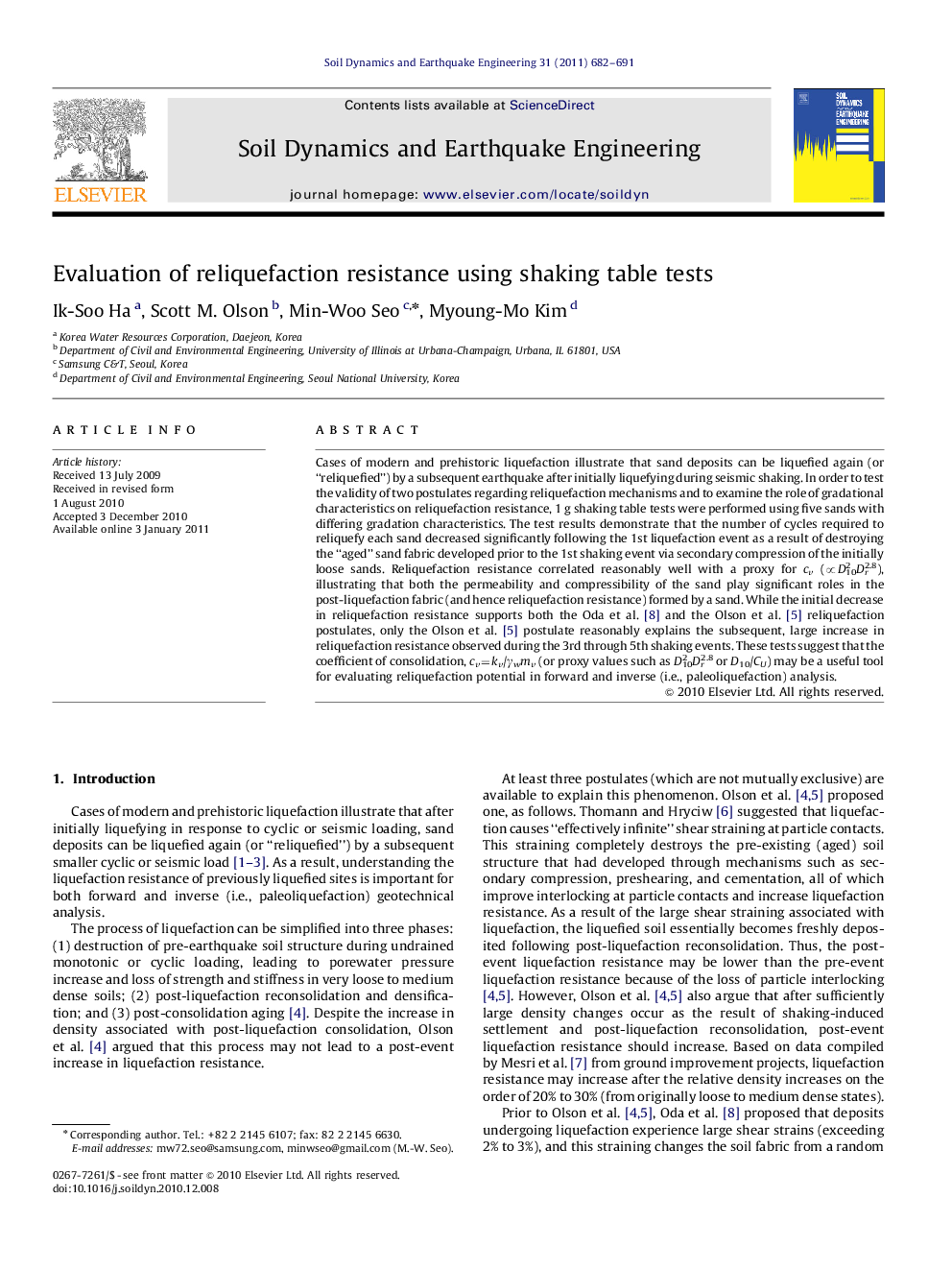| کد مقاله | کد نشریه | سال انتشار | مقاله انگلیسی | نسخه تمام متن |
|---|---|---|---|---|
| 304622 | 512816 | 2011 | 10 صفحه PDF | دانلود رایگان |

Cases of modern and prehistoric liquefaction illustrate that sand deposits can be liquefied again (or “reliquefied”) by a subsequent earthquake after initially liquefying during seismic shaking. In order to test the validity of two postulates regarding reliquefaction mechanisms and to examine the role of gradational characteristics on reliquefaction resistance, 1 g shaking table tests were performed using five sands with differing gradation characteristics. The test results demonstrate that the number of cycles required to reliquefy each sand decreased significantly following the 1st liquefaction event as a result of destroying the “aged” sand fabric developed prior to the 1st shaking event via secondary compression of the initially loose sands. Reliquefaction resistance correlated reasonably well with a proxy for cv (∝D102Dr2.8), illustrating that both the permeability and compressibility of the sand play significant roles in the post-liquefaction fabric (and hence reliquefaction resistance) formed by a sand. While the initial decrease in reliquefaction resistance supports both the Oda et al. [8] and the Olson et al. [5] reliquefaction postulates, only the Olson et al. [5] postulate reasonably explains the subsequent, large increase in reliquefaction resistance observed during the 3rd through 5th shaking events. These tests suggest that the coefficient of consolidation, cv=kv/γwmv (or proxy values such as D102Dr2.8 or D10/CU) may be a useful tool for evaluating reliquefaction potential in forward and inverse (i.e., paleoliquefaction) analysis.
Journal: Soil Dynamics and Earthquake Engineering - Volume 31, Issue 4, April 2011, Pages 682–691